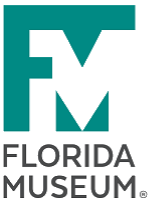Hi Everyone,
Recently, at the Botany 2012 meeting in Columbus, Ohio, I was asked about the most efficient way to help students when they run into difficult (dare I say it -- illegible!) handwriting on a herbarium sheet. We, the natural history collections and biodiversity informatics communities, haven't got a magic answer or perfect resource - yet for the penmanship-challenged (or maybe we can blame it on quill pens or early ball points). We note there are some web sites that offer possible clues for some collectors. In addition, there are a few other ideas that emerged at the Digitization Workshop held just post Botany 2012 about what one might do if (who am I kidding) when this is an issue.
Help for Handwritten Labels
Global Plants Initiative, Resources for the Digitisation of Herbarium Specimens. This resource provides a way to search by collector name, or even part of a collector name if that's all you can read. There are sample images provided along with the areas where the botanist collected specimens and the name used by the collector as an author.
| http://gpi.myspecies.info/content/botanists | An alphabetical list of botanical collectors - with sample handwriting. |
| http://gpi.myspecies.info/content/collectors | Searchable database table of collectors with associated handwriting samples. |
| http://gpi.myspecies.info/digitising-resources/designation-identifier | A partial search string works here - if you can only read part of the collector's name. Results include more images by the same collector. |
Auxilium ad Botanicorum Graphicem. Can you read French? If not, try Google Translate and check this site out.
| www.ville-ge.ch/musinfo/bd/cjb/auxilium/ | About the site (in French). A virtual catalog of identification cards autobiographical botanists published in the journal Candollea from 1972 to 1979. |
| www.ville-ge.ch/musinfo/bd/cjb/auxilium/search.php | Search from this link. |
Chirographum historicum. There are many sample images here all searchable by collector name. This website is a collaborative effort between several herbaria including: North Carolina State University, The Charleston Museum, The New York Botanical Garden, The Philadelphia Academy of Natural Sciences and The Smithsonian Institution. The Herbarium at NCSU in Raleigh, North Carolina invites collaborative submissions from other curators and historians desiring to document handwriting of botanical collectors.
Handwriting. From the Linnean Herbarium (S-LINN), Department of Phanerogamic Botany at the Swedish Museum of Natural History (S), one finds examples of handwriting on sheets in the Linnean Herbarium collection by collector name.
The National Archives, Palaeography. If really old handwriting (1500 - 1800) is the challenge, this site is great. There are tips on old handwriting scripts, sample images and lots of transcriptions for the sample images. Tutorials and practice pages are included, if you are so inclined.
More Help for Handwritten Labels
If you still can't figure it out and would like to enlist others in solving the who-dunnit, try taking a photo of the difficult label and posting it to your web site in a public folder. Then, post the link to the image in your favorite group like the HERBARIA listserve or SERNEC and see what happens. Nothing like a good mystery!
For students in a natural history museum, the creation of a blog might shed some collective light on tricky penmanship. Students could post the images, sharing what they can and cannot read -- and enlist the outside community in getting to the answers. They could share what they are learning at the same time. A blog, well-organized, also creates a resource future staff can use and add to.
If you are already imaging labels and linking them to your database records, is there a field for data entry staff to indicate a status like "can't read writing" or "illegible" Using a controlled vocabulary, this status field could then be queried to create datasets to share with anyone who would like to work just on these.
Do you have other ideas?
Are there more web sites, and if so, what are they?
Perhaps in conjunction with the iDigBio Authority Files working group, the community can begin to create a handwriting resource for natural history museum collectors. It seems it would likely include the name of the collector, field of the collector, sample images, translations of the handwriting for each image and a place to upload mystery images with any metadata possible for everyone (including the public) to decipher. Any museum could contribute images and the public could participate easily. Those of you who have mastered the art of deciphering the enigmatic script of a given collector could also be listed in this database - you are a resource, both treasured and finite! What other fields would we want to capture? What authority files already exist for this?
Your comments and contributions please! -Deb





the show must go on
Unfortunately there are times when we’ve exhausted all means available and still cannot resolve the illegible text issue. In such cases, we’ve had databasers type in the text “[illegible]” immediately succeeding the illegible text. This is not the best approach perhaps (considering there is no clear reference to what extent of the text the word “illegible” is applied), but it has allowed work to resume.
e.g. “Collected on L◊ʎɗɒN bridge”
would be transcribed as: “Collected on London [illegible] bridge”.
More ideas for illegible handwriting
Greetings everyone, great to get more feedback on this topic.
Amanda Neill from BRIT chimes in: "if all else fails: send the HERBARIA listserv a picture of the label!"
And from Barbara Thiers at NYBG: "I second Amanda’s suggestion – could also include nhcoll and TAXACOM for the broader collections community."
From Deb: nhcoll is the Natural History Collections Listserver and anyone can be a member of nhcoll. And, TAXACOM is an e-mail list for biological systematics. Click the links to read more about nhcoll and TAXACOM.
Elspeth Haston of RBGE in Edinburgh jumps in with a new direction for us to think about (and a new forum posting then) ..."I suppose ideally it would be nice if we could use ocr and pattern recognition to narrow the choice of writer, giving a subset of samples for the curator to look through. I wonder if anyone else has been working on this for any other field?"
From Deb: Elspeth, I think this is a great topic to get feedback on the feasibility from the OCR, NLP community.